Kobo Writing Life, Kobo's self-publishing platform, is "about the empowerment of independent authors to make their books available to our 16 million customers around the world," Tamblyn said.
Unlike other self-publishing programs, Kobo is helping its self-published authors meet readers and other authors in bricks-and-mortar stores, uniting the online world and "real" world in a way we haven't seen before. Its first event, held earlier this month, is "a model we're going to replicate with ABA stores," Tamblyn said.
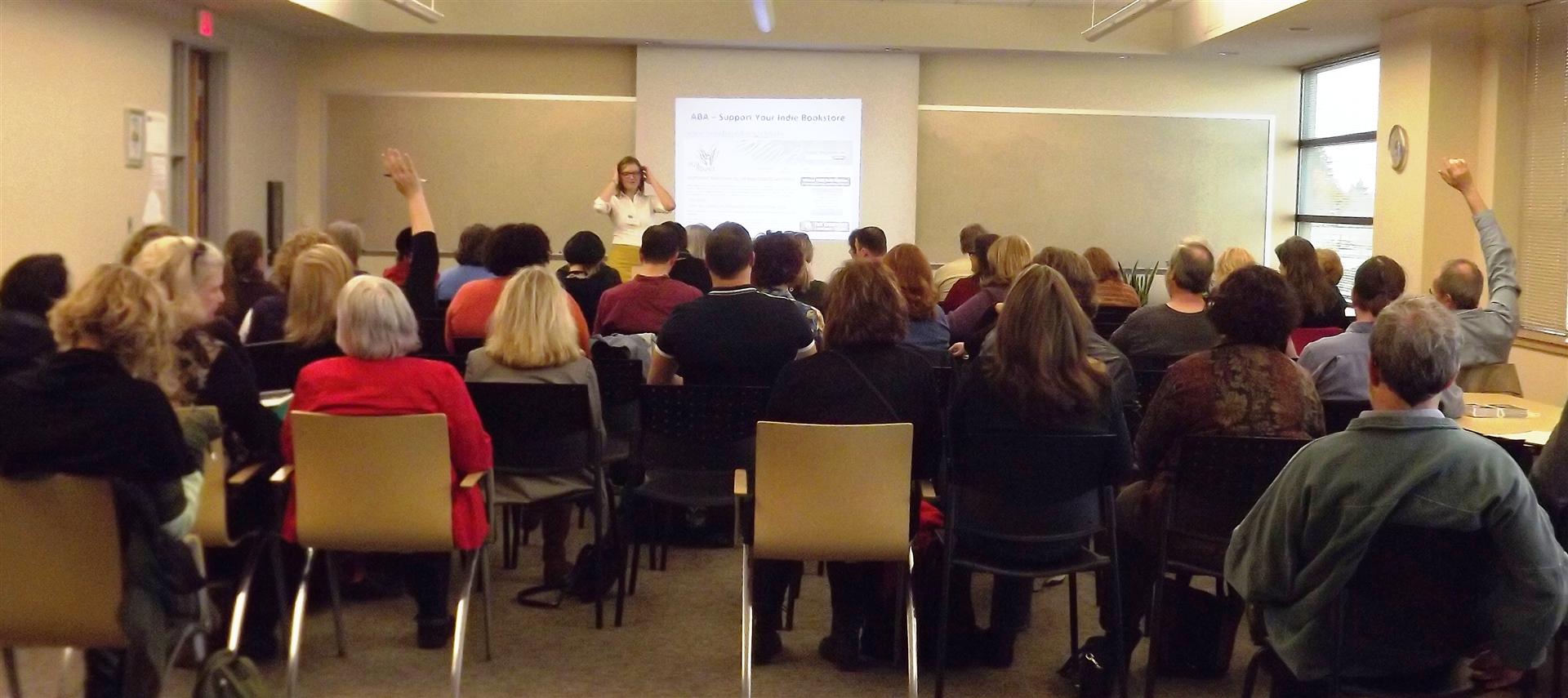 At that event, held November 2, 18 local authors, all part of Kobo Writing Life, gathered for a workshop and reception at Jan's Paperbacks, Beaverton, Ore. During the workshop, held at a meeting space near the store, Debbie Burke, owner of Jan's Paperbacks, author Maggie Jaimeson, and Christine Munroe, U.S. manager of Kobo Writing Life, all spoke about forging partnerships between local authors and indie bookstores and the best ways to use Kobo's self-publishing platform. Afterward, the authors descended on Jan's Paperbacks for a three-hour reception featuring wine, food and free books.
At that event, held November 2, 18 local authors, all part of Kobo Writing Life, gathered for a workshop and reception at Jan's Paperbacks, Beaverton, Ore. During the workshop, held at a meeting space near the store, Debbie Burke, owner of Jan's Paperbacks, author Maggie Jaimeson, and Christine Munroe, U.S. manager of Kobo Writing Life, all spoke about forging partnerships between local authors and indie bookstores and the best ways to use Kobo's self-publishing platform. Afterward, the authors descended on Jan's Paperbacks for a three-hour reception featuring wine, food and free books.
"That Saturday was the highest grossing day we've ever had," said Burke, who has owned the store since 2000 and was thrilled with the turnout of close to 100 readers. Giveaways included pre-printed cards with coupon codes that customers could redeem for Kobo e-books, baskets of signed print books and a Kobo device that was raffled off. "It kind of surprised me, because we were giving away so many books, but authors were buying each other's books, buying other books in the store," Burke said. "We did more business from 6-9 p.m. than in the eight hours we were open earlier that day."
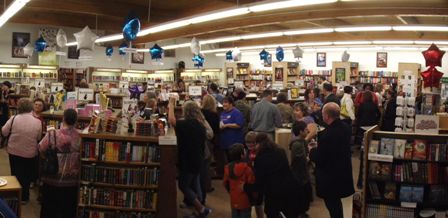 The event was also a success for the authors: half of the attending authors saw their books hit Kobo's top 50 bestselling e-books list in the following days. And several of those authors, including Maggie Jaimeson, have agreed to "continue the party" through the end of the month by offering many of those same titles for free if downloaded through Kobo Books with the coupon code.
The event was also a success for the authors: half of the attending authors saw their books hit Kobo's top 50 bestselling e-books list in the following days. And several of those authors, including Maggie Jaimeson, have agreed to "continue the party" through the end of the month by offering many of those same titles for free if downloaded through Kobo Books with the coupon code.
The workshop and reception came about through a conversation between Jaimeson, who is a friend of the store and a frequent collaborator, and Mark Lefebvre, Kobo's director of self-publishing and author relations, who met at a writing conference and talked about the possibilities for in-store events featuring self-published authors. Jaimeson recommended partnering with Jan's Paperbacks, and soon Lefebvre, Burke, Jaimeson, Jill Glass (Burke's daughter and marketer for Jan's Paperbacks) and Munroe were in conference calls to hash out the details. After the success of the Jan's Paperbacks event, Kobo is eager to host events with other indies across the country; in early December, Kobo Writing Life is sponsoring an event with author Barry Lyga at WORD in Brooklyn, N.Y.
For Burke, who sells mostly used books, moving into e-books has been a steep but rewarding learning experience. She sells devices through her store's e-commerce site, and frequently lends her personal Kobo device to customers who are curious about it. Burke's daughter came up with the idea of advertising e-books in store through cards printed with QR codes; so far, it's proven effective in getting customers' attention.
"It's looking toward the future," explained Burke, who has seen her e-book sales grow steadily since day one. "This is where it's going; you have to do print and digital." That's a need that Kobo is fulfilling.










 With the mission of allowing "anyone anywhere in the world to read whatever book they want on whatever device they like," as chief content officer Michael Tamblyn put it, Kobo now has more than 16 million users worldwide, offers nearly four million titles, and delivers to 190 countries--effectively every country on the globe. Including retail partnerships, Kobo has some 17,600 physical and online stores and works with 11,000 publishers. It's the biggest e-bookseller in Canada and France. And in the year since it and the American Booksellers Association began their partnership whereby indies have been selling Kobo e-readers, tablets and e-books in stores and online, Kobo is expanding and fine tuning the program that aims to allow indie booksellers to continue to serve customers who have begun to do much or all of their reading digitally.
With the mission of allowing "anyone anywhere in the world to read whatever book they want on whatever device they like," as chief content officer Michael Tamblyn put it, Kobo now has more than 16 million users worldwide, offers nearly four million titles, and delivers to 190 countries--effectively every country on the globe. Including retail partnerships, Kobo has some 17,600 physical and online stores and works with 11,000 publishers. It's the biggest e-bookseller in Canada and France. And in the year since it and the American Booksellers Association began their partnership whereby indies have been selling Kobo e-readers, tablets and e-books in stores and online, Kobo is expanding and fine tuning the program that aims to allow indie booksellers to continue to serve customers who have begun to do much or all of their reading digitally.

 At the core of Kobo's efforts, said Michael Tamblyn, is "our near obsessive focus on people with books at the center of their lives. Everything from our relationships with publishers to the kinds of devices we create comes from our desire to create the perfect reading experience for passionate readers." One example of this is the Kobo Aura HD, which uses e-ink even though "everyone says e-ink is dead." To the contrary, Kobo found that "our most passionate readers say they like e-ink and want the best possible device with a larger screen and a case improved so that it feels like a book," Tamblyn said. "It's the kind of device that anyone who reads fiction every day loves to read on."
At the core of Kobo's efforts, said Michael Tamblyn, is "our near obsessive focus on people with books at the center of their lives. Everything from our relationships with publishers to the kinds of devices we create comes from our desire to create the perfect reading experience for passionate readers." One example of this is the Kobo Aura HD, which uses e-ink even though "everyone says e-ink is dead." To the contrary, Kobo found that "our most passionate readers say they like e-ink and want the best possible device with a larger screen and a case improved so that it feels like a book," Tamblyn said. "It's the kind of device that anyone who reads fiction every day loves to read on."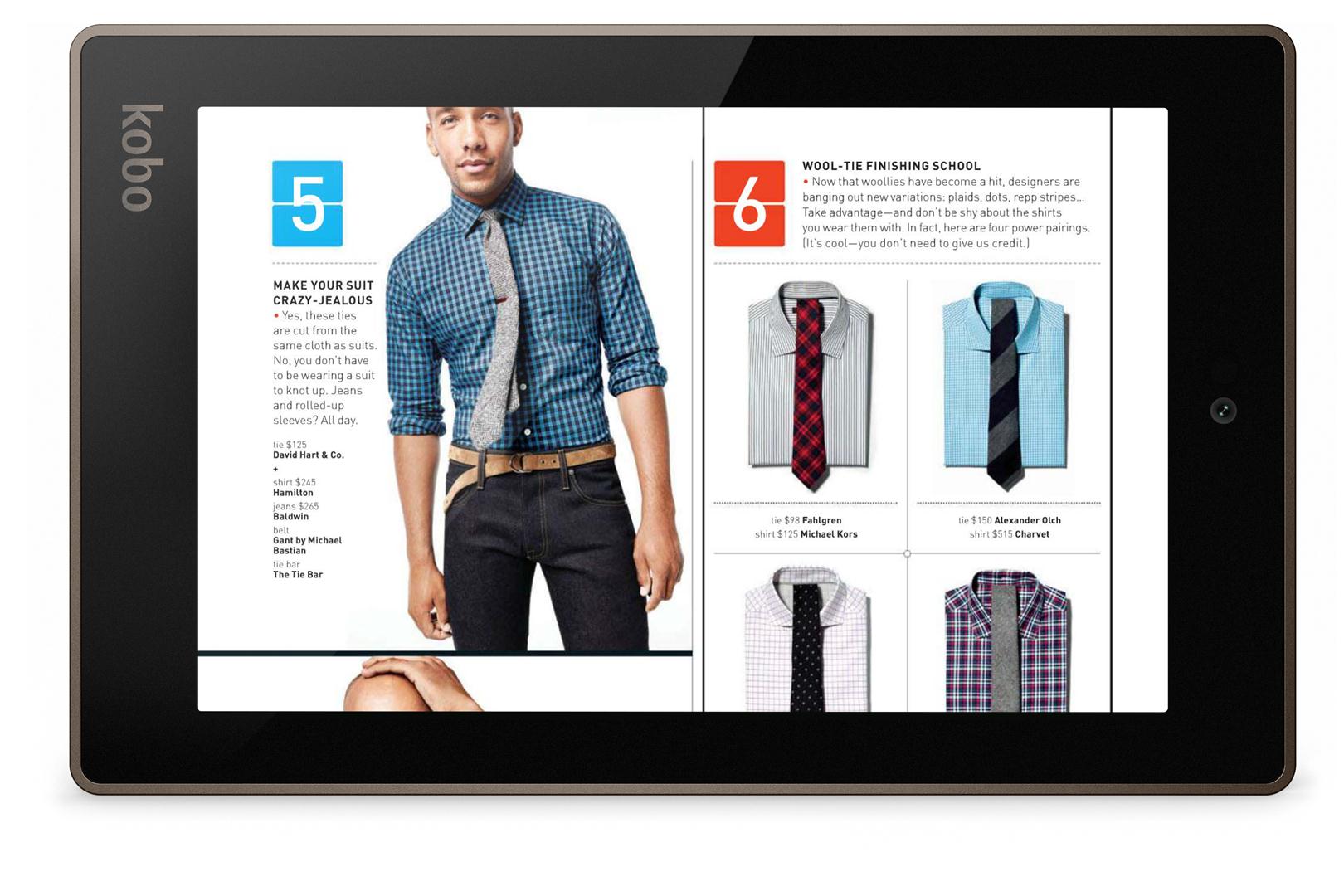 Kobo's tablets include the Kobo Arc, Kobo Arc 7 and the new Kobo Arc 7HD and Kobo Arc 10HD, the last two of which Tamblyn called "the best color tablets with the best possible screens for color reading experience," particularly for illustrated books, children's books and magazines.
Kobo's tablets include the Kobo Arc, Kobo Arc 7 and the new Kobo Arc 7HD and Kobo Arc 10HD, the last two of which Tamblyn called "the best color tablets with the best possible screens for color reading experience," particularly for illustrated books, children's books and magazines.
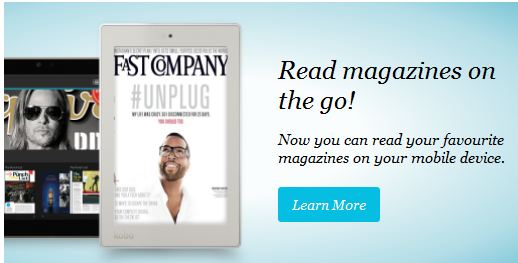 Earlier this month
Earlier this month 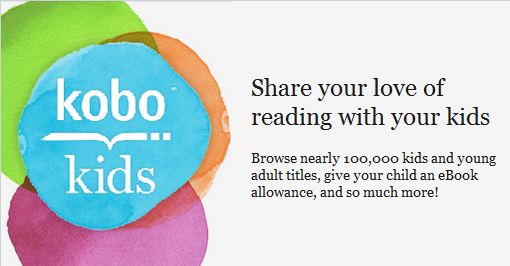
 At that event, held November 2, 18 local authors, all part of Kobo Writing Life, gathered for a workshop and reception at
At that event, held November 2, 18 local authors, all part of Kobo Writing Life, gathered for a workshop and reception at  The event was also a success for the authors: half of the attending authors saw their books hit Kobo's top 50 bestselling e-books list in the following days. And several of those authors, including Maggie Jaimeson, have agreed to "continue the party" through the end of the month by offering many of those same titles for free if downloaded through Kobo Books with the coupon code.
The event was also a success for the authors: half of the attending authors saw their books hit Kobo's top 50 bestselling e-books list in the following days. And several of those authors, including Maggie Jaimeson, have agreed to "continue the party" through the end of the month by offering many of those same titles for free if downloaded through Kobo Books with the coupon code.